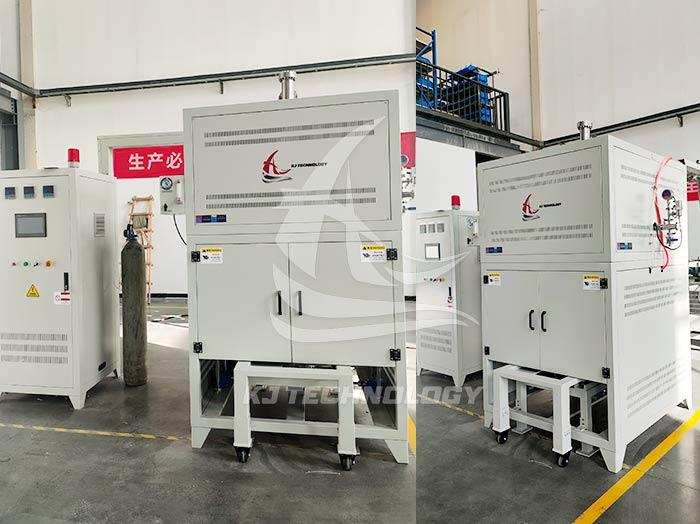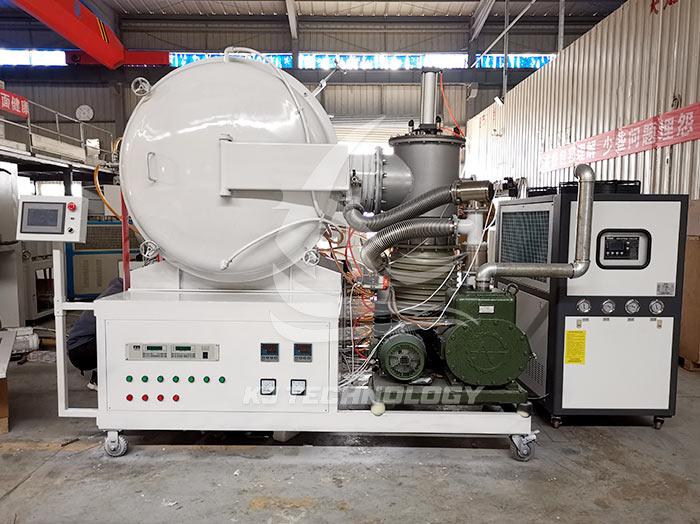What is the typical brazing temperature for a high-temperature vacuum brazing furnace?
 11-20-2025 Author: KJ technology
11-20-2025 Author: KJ technology
The brazing temperature of a high-temperature vacuum brazing furnace is usually set between 950 ℃ and 1600 ℃, depending on the material characteristics, process requirements, and equipment performance of the base material and brazing material. The following is a detailed analysis:
1. Core basis for temperature range
Classified by brazing temperature
Low temperature vacuum brazing furnace: working temperature below 650 ℃, suitable for brazing low melting point metals such as aluminum and silver.
Medium temperature vacuum brazing furnace: Working temperature between 650 ℃ and 950 ℃, commonly used for connecting copper and nickel based alloys.
High temperature vacuum brazing furnace: The working temperature exceeds 950 ℃ and can reach up to 1600 ℃, suitable for brazing refractory materials such as stainless steel, titanium alloys, and high-temperature alloys.
Temperature requirements for typical application scenarios
Aircraft engine components, such as honeycomb sealing rings and fuel manifolds, need to be brazed at 1050 ℃ to 1100 ℃ to ensure joint strength and high temperature resistance.
Automotive heat exchanger: Aluminum alloy radiators and condensers are usually brazed at 650 ℃ to 750 ℃ to balance welding quality and material deformation control.
New energy vehicle battery module: Copper/aluminum dissimilar material connection needs to achieve high conductivity and thermal conductivity welding at 950 ℃ to 1050 ℃ to improve the energy density of the battery pack.
2. Key influencing factors of temperature setting
Match the melting points of the base material and brazing material
The brazing temperature should be higher than the melting point of the brazing material (usually 30 ℃ to 100 ℃ higher), but lower than the melting point of the base material. For example, when the melting point of the brazing material is between 970 ℃ and 999 ℃, the brazing temperature is usually set between 1050 ℃ and 1100 ℃.
Process requirements and equipment performance
Temperature uniformity: The high-temperature vacuum brazing furnace ensures temperature uniformity within ± 3 ℃ through multi zone temperature control technology (such as 9-point temperature measurement), avoiding material deformation or welding defects caused by local overheating.
Vacuum degree guarantee: In a high vacuum environment of 1.33 × 10 ⁻ ² Pa to 1.33 × 10 ⁻ ³ Pa, the brazing temperature can be precisely controlled to prevent defects such as oxide scale and pores. For example, a certain device has a vacuum degree of not less than 3.0 × 10 ⁻ ³ Pa at 1500 ℃ to ensure welding quality.
Heating and cooling rate: The high-temperature furnace needs to quickly heat up (such as raising the room temperature to 1500 ℃ for less than 90 minutes) and cool down (such as lowering 1500 ℃ to 200 ℃ for less than 30 minutes) to meet the needs of mass production.








